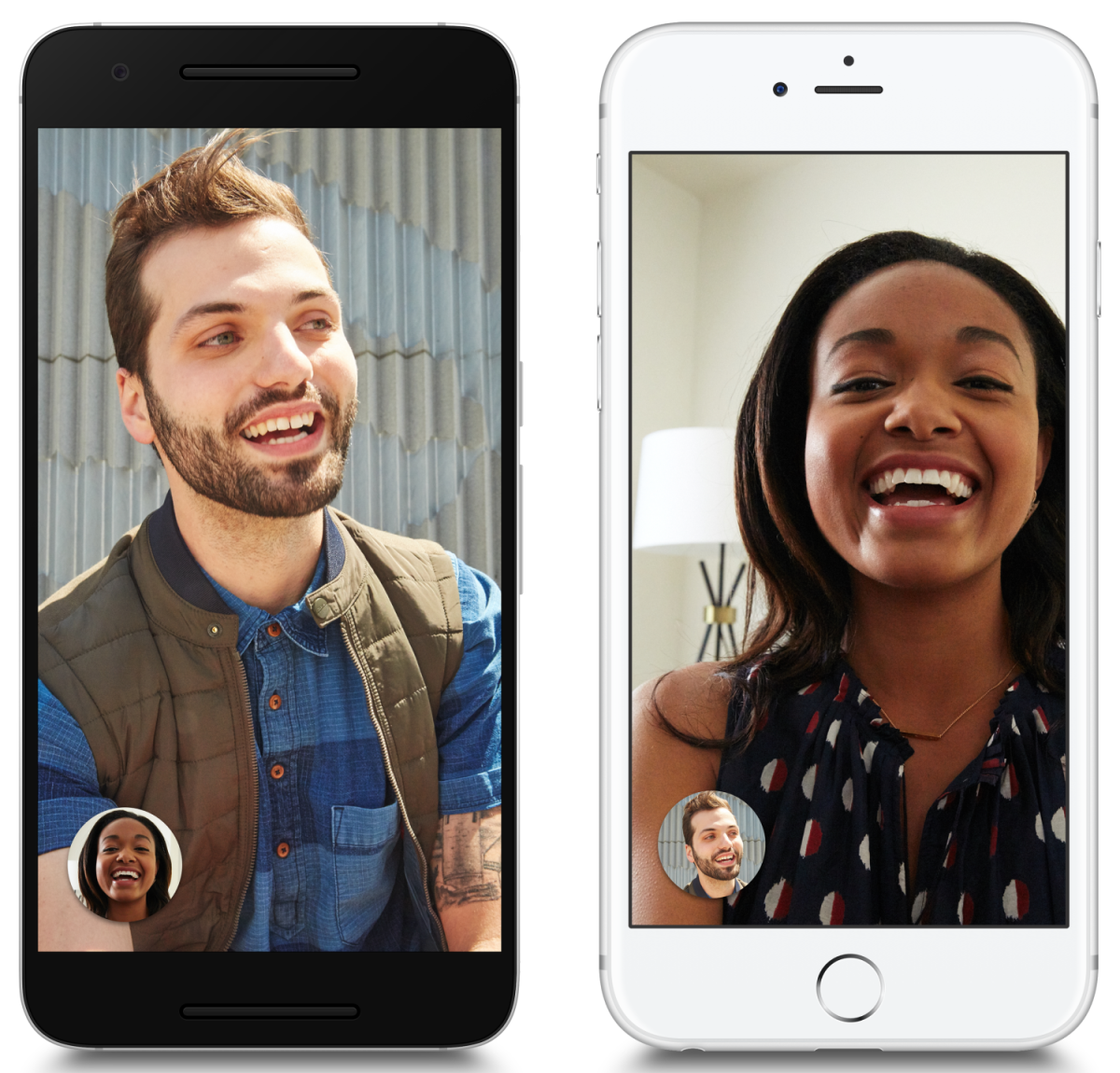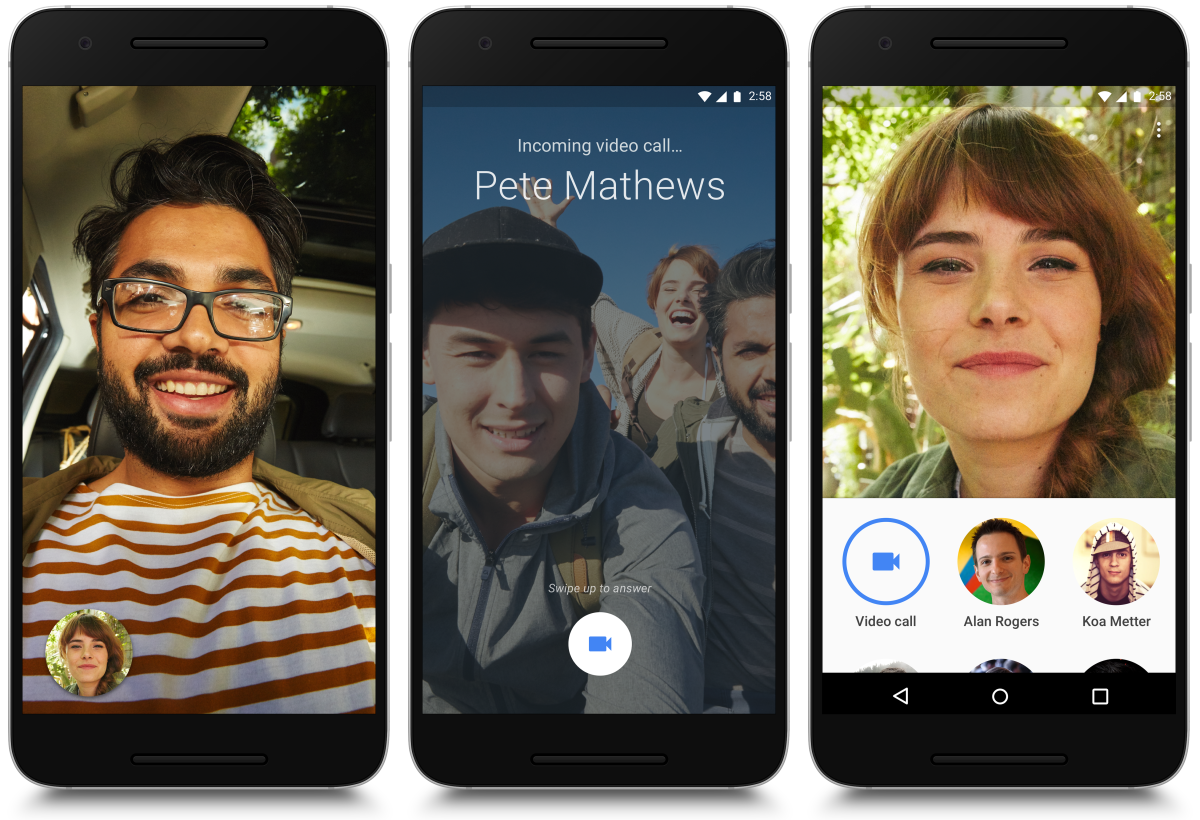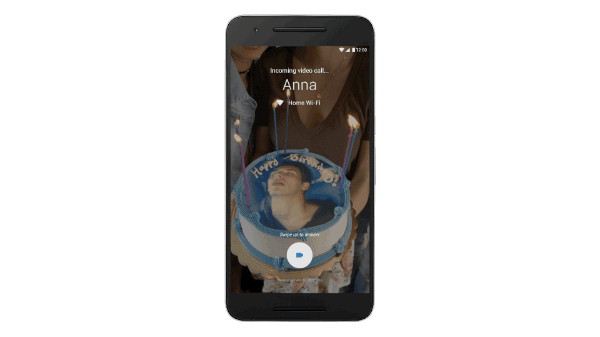Google today launched Google Duo, a one-to-one video calling app for Android and iOS. You can download Duo from Google Play and Apple’s App Store, though you may have to wait a bit as this is a gradual rollout — “it will be live worldwide in the next few days.”
Duo is mobile-only, was built to be very fast, thanks to Web Real-Time Communication (WebRTC), and “takes the complexity out of video calling,” according to principal software engineer Justin Uberti. Duo promises fewer dropped calls, and even supports handing calls off between Wi-Fi and cellular connections.
To get started with Duo, all you need is a phone number. You don’t need to create a separate account, nor do you need a Google account. And no, Duo doesn’t use your Google account in any way, according to Google.
Duo, along with messaging app Allo, was unveiled at Google’s I/O 2016 developer conference and made available in private beta (the number of testers is “in the thousands”), with a promise for a summer launch. Both apps are coming out of the Communications product team formed almost two years ago under vice president of product management, Nick Fox.
Fox explained that Duo is launching ahead of Allo because development for the former actually started first. Duo has simply been in testing longer. Fox took some time to detail the three areas that his team focused on when designing Duo.
Simplicity
The team’s goal was to make the calling experience as absolutely simple as possible. That’s why it is phone-number based, there is no need for a new account, and the user interface is very straightforward.
“The UI is the person you’re talking to,” Fox declared.
It takes one tap to get into a call, one tap to answer, and, in general, everything is focused on getting you into a call as quickly as possible. A neat thing I noticed is that if you navigate away from a call, the video will stop. In short, if you can’t see yourself, the person you’re calling also can’t see you.

Fox noted that Duo started out as an app offering a “great quality experience on Android” that “takes the complexity out of video calling.” But in order to achieve the latter, the team decided it needed to build an iOS app as well.
Speed and reliability
Fox explained that the team worked hard to understand different network topologies. A lot of time was spent on ensuring the call will degrade gracefully when packets drop, for example.
To keep you connected, Duo adjusts call quality based on changing network conditions. That means when bandwidth is limited, Duo will reduce the video resolution to keep the call going smoothly. In fact, you can manually turn this on: A “limit mobile data usage” option can be toggled to restrict data usage on cellular networks, lowering video resolution but consuming less data. When the network quality gets really poor, Duo will fall back to just audio.

The handoff between different networks was also given a lot of thought. Duo tries to switch between Wi-Fi and cellular data automatically without dropping your call. This means you can be on a call at home or in the office, and it should stay connected even if you leave and step out of Wi-Fi range.
Fox explained exactly how the handoff feature works. The app doesn’t have two connections going on simultaneously, it simply monitors to see if a better connection is available. Duo always prefers Wi-Fi, assuming the connection is strong enough. The app will switch to cellular if Wi-Fi degrades or gets out of range. Duo will, however, switch back to Wi-Fi if it deems the connection strong enough again.
Calls can still drop, of course. For example, if Wi-Fi deteriorates and cellular isn’t available, your call will disconnect.
Making the app feel human
Fox says the last goal was to get the app out of the way. The focus is on seeing the other person and connecting with them. Even the profile pictures in the app are circular so they take up less space.
The real differentiating feature for Duo is called Knock Knock. In short, you see a live video of your caller (think of it as a one-way video preview) before you pick up. Knock Knock only works for people in your contacts — you don’t want everyone who can get your number calling you with a video preview.

Fox explained that Knock Knock reduces the barrier to starting a call. It gives you a sense of what the person is up to and why they want to chat. It’s thus much easier to start off a call with a positive emotion rather than with the “Why are you calling me?” reaction many of us experience when getting a call out of the blue.
While the app functions the same way on Android and iOS, Knock Knock performs slightly differently across the two platforms. On Android, Knock Knock works on your lock screen, while on iPhone you have to be in the app to see the video preview. This is because Android provides an API for apps to take over the lockscreen. Apple doesn’t offer such an option to app developers, so iOS users will simply get a notification on their lockscreen. If you press preview, Duo will take you into Knock Knock.
Duo is one of four Google messaging apps
During our chat, Fox promised that Allo and Duo are not experimental messaging apps — unlike many other apps and projects Google has demoed and unveiled before, these two are here to stay. When the two apps were first unveiled in May, we compared and contrasted them with Messenger and Hangouts, Google’s existing messaging apps. Fox added a bit more color to this — here’s the basic breakdown as it stands now:
- Consumer: Allo and Duo, simple mobile-only products
- Carrier services: Messenger, not really a Google service
- Enterprise and productivity: Hangouts, includes desktop video conferencing
Duo not only has to differentiate itself from all the other messaging apps out there, but it also has to compete with Google’s own offerings. In addition to Knock Knock, it’s worth pointing out a few other features that make Duo stand out.
All Duo calls are end-to-end encrypted by default. Because the calls are set up via Google’s servers and rely on peer-to-peer technology, encryption is a must to ensure none of the intermediate networks can tap into your call.
As noted earlier, Duo leverages WebRTC, an open-source project for browser-based real-time communication that was also developed by Google. The two teams at Google worked closely together, so improvements have been built back into the platform. Fox gave two examples of this. While building Duo, the team worked on bandwidth estimation, to increase and decrease the video quality, and on making sure audio echo is minimized. A lot of that work went back into WebRTC, improving the project for other apps and services that rely on it.
Duo also relies on Google’s network protocol Quick UDP Internet Connections (QUIC). From a network technology level, QUIC helps reduce latency and gets the call set up faster by allowing Google’s servers to establish an encrypted connection and deliver the call to your device in a single round trip.
All of this makes Duo great, at least on paper. And in our testing, it’s a very snappy video calling app. But it’s still very early days, and while it has many advantages over Hangouts, or even Skype, it’s also missing a ton of features.
For example, we asked if there are plans to support group calls or build a desktop app. Nope.
There isn’t even a way to add contacts within the actual app, let alone important contacts from other apps. You have to do everything manually in Android or iOS.
The team is, of course, open to feedback and will add functionality depending on what users want. But, at least for now, Duo isn’t going to completely replace your existing video calling app. For one-to-one calls though, it’s a worthy contender.
VentureBeat's mission is to be a digital town square for technical decision-makers to gain knowledge about transformative enterprise technology and transact. Learn More

